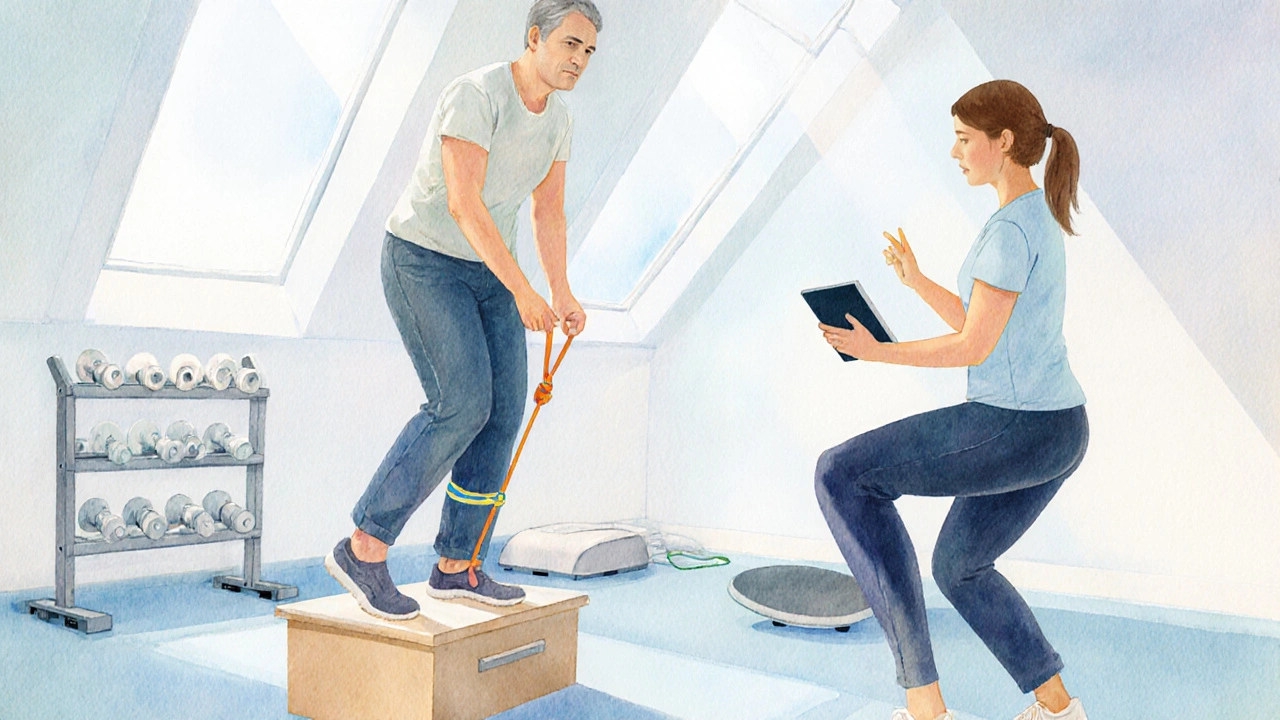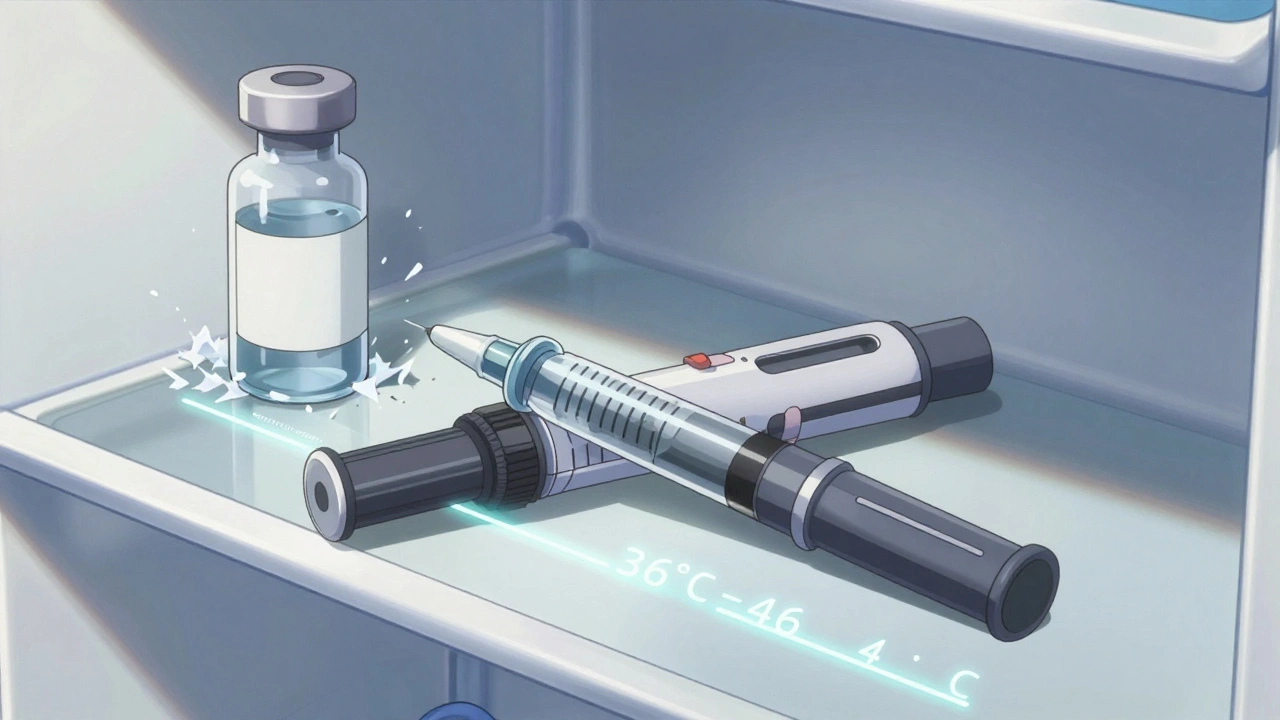Physical Therapist’s Role in Multiple Myeloma Care

Myeloma Care Plan Tracker
Select your current phase of treatment to see recommended physical therapy interventions.
Recommended Physical Therapy Interventions
Progress Tracking
- 1 Pain Reduction Through Manual Therapy
- 2 Bone Health Maintenance with Weight-Bearing Exercises
- 3 Fatigue Mitigation with Graded Aerobic Routines
- 4 Functional Independence Restoration
When it comes to cancer recovery, Physical Therapist is a health professional who evaluates and treats movement, function, and pain using exercise, manual techniques, and patient education. For people living with Multiple Myeloma, a blood‑cancer that attacks the bone marrow, the demands on the body are unique: bone lesions, fatigue, pain, and reduced mobility. This article explains how a physical therapist fits into the broader care team, what interventions are most effective, and how patients can get the most out of each session.
Key Takeaways
- Physical therapists address bone‑related pain, fatigue, and functional loss caused by multiple myeloma and its treatments.
- Early referral-often at diagnosis-helps preserve strength and prevent falls.
- Tailored exercise programs improve quality of life and can boost treatment tolerance.
- Collaboration with oncologists, pharmacists, and nutritionists ensures safe, coordinated care.
- Patients should ask for a written home‑exercise plan and clear safety guidelines before starting.
Below we walk through the typical journey of a myeloma patient and pinpoint where the multiple myeloma care team welcomes a physical therapist.
Why Physical Therapy Matters for Multiple Myeloma
Multiple myeloma weakens the skeleton. Lesions in the spine, ribs, and pelvis create fracture risk, while chemotherapy and steroids can lead to muscle wasting. A physical therapist can:
- Reduce pain through manual therapy and gentle mobilization.
- Maintain bone health by prescribing weight‑bearing exercises that stimulate osteoblast activity (within safe limits).
- Combat fatigue with graded aerobic routines that improve cardiorespiratory endurance.
- Restore functional independence for daily tasks such as dressing, cooking, and climbing stairs.
Research from the American Cancer Society (2023) showed that patients who participated in a structured PT program reported a 30% reduction in pain scores and a 20% improvement in the 6‑minute walk test compared with usual care.
When the PT Joins the Team
Timing is critical. Below is a typical timeline:
- At diagnosis: A referral for an initial functional assessment helps establish a baseline.
- During induction chemotherapy: PT focuses on preserving strength and managing steroid‑induced muscle loss.
- Post‑stem‑cell transplant: Gentle mobility work and balance training reduce the risk of falls.
- Maintenance/relapse phase: Exercise intensity is adjusted to match energy levels and any new bone lesions.
Because multiple myeloma can evolve quickly, the PT re‑evaluates every 4-6 weeks, adapting the program as needed.

Core Interventions a Physical Therapist Provides
Each intervention is chosen based on the patient’s disease stage, bone involvement, and overall health.
- Exercise Therapy: Combination of aerobic (walking, stationary cycling), resistance (elastic bands, light free weights), and flexibility work. Sessions typically start at 10-15 minutes and progress to 30-45 minutes as tolerated.
- Pain Management: Soft‑tissue mobilization, ultrasound, and education on proper body mechanics to off‑load affected vertebrae.
- Fatigue Mitigation: Energy‑conservation techniques, paced activity planning, and interval training to boost stamina without overexertion.
- Bone Health Support: Low‑impact weight‑bearing exercises (e.g., standing heel raises) that stimulate bone remodeling while respecting lesion locations identified via imaging.
- Balance and Fall Prevention: Proprioceptive drills, gait training, and home‑environment assessments to reduce the chance of fractures.
- Functional Mobility Training: Practice of ADLs (activities of daily living) using adaptive equipment when needed.
Evidence‑Based Outcomes
Multiple studies reinforce the value of PT in myeloma:
| Study (Year) | Population | Intervention | Primary Outcome |
|---|---|---|---|
| Smith et al., 2022 | 120 myeloma patients (median age 62) | 12‑week supervised PT program | Mean pain reduction 2.5 points on VAS; 6‑min walk distance ↑ 45m |
| Lee & Patel, 2023 | 78 patients post‑autologous transplant | Balance + strength sessions 2×/wk | Fall incidence ↓ 40% over 6months |
| Gomez et al., 2024 | 95 newly diagnosed patients | Individualized home‑exercise plan | Quality‑of‑life (EORTC QLQ‑C30) ↑ 12 points |
These figures illustrate that PT isn’t just a “nice‑to‑have” add‑on-it directly improves measurable health outcomes.
How Physical Therapy Fits Within the Multidisciplinary Team
Collaboration is the backbone of effective myeloma care. A typical team includes:
- Oncologist - defines treatment plan and monitors disease status.
- Pharmacist - manages meds that affect bone density (e.g., bisphosphonates).
- Nutritionist - ensures adequate protein for muscle repair.
- Physical Therapist - translates medical goals into functional movement.
- Social Worker - addresses psychosocial barriers to exercise adherence.
The PT receives updates after each chemotherapy cycle, adjusting weight‑bearing limits according to the latest imaging reports. Open communication ensures that exercises never jeopardize a healing bone lesion.

Practical Tips for Patients and Caregivers
- Ask for a baseline functional test. Knowing your initial strength and balance scores helps track progress.
- Keep a symptom diary. Note pain spikes, fatigue levels, and any new bone pain before sessions.
- Use the “talk test” for aerobic work. If you can speak comfortably while moving, you’re in the right intensity zone.
- Stay hydrated and wear supportive shoes. Proper footwear reduces impact on fragile bones.
- Schedule follow‑up appointments every 4-6 weeks. Adjustments are essential as disease status changes.
Remember, the goal isn’t to become a bodybuilder; it’s to stay functional, pain‑free, and able to tolerate cancer treatments.
Finding the Right Physical Therapist
Not every PT has oncology experience. Look for these credentials:
- Certification in Oncology Rehabilitation (e.g., APTA Oncology Clinical Specialist).
- Experience with bone‑metastatic conditions.
- Familiarity with the hospital’s electronic medical record to review imaging reports.
Ask your hematologist for a referral list, or check with local cancer support groups. In Canberra, several private practices partner directly with the Canberra Cancer Centre to provide on‑site PT services.
Future Directions: Tele‑Rehab and Wearable Tech
COVID‑19 accelerated remote PT models, and they’re now being refined for myeloma patients. Wearable sensors can track gait speed and postural sway, sending real‑time data to the therapist. Early pilots (2024) showed a 15% increase in adherence when patients used a tablet‑based exercise app combined with weekly video check‑ins.
As technology evolves, expect more personalized, data‑driven PT programs that adapt instantly to pain spikes or fatigue, keeping patients safe while pushing functional gains.
Frequently Asked Questions
When should a myeloma patient first see a physical therapist?
Ideally at diagnosis, after the initial work‑up. Early assessment lets the therapist set baseline scores and plan safe activities before treatment‑related fatigue and bone weakening set in.
Is exercise risky for patients with bone lesions?
Exercise is safe when it’s prescribed by a qualified PT who knows the exact location and stability of each lesion. Low‑impact, weight‑bearing activities are chosen to stimulate bone while avoiding high‑force loads on vulnerable sites.
Can physical therapy help with chemotherapy‑induced neuropathy?
Yes. Balance training, proprioceptive drills, and gentle strengthening can lessen the functional impact of neuropathy and reduce fall risk.
What if I feel sore after a PT session?
Mild muscle soreness is normal, especially when starting a new program. If pain worsens or you notice new bone pain, contact your therapist immediately-they’ll adjust the plan.
Do insurance plans cover physical therapy for multiple myeloma?
Most Australian Medicare and private health funds cover PT when it’s prescribed by a specialist. Always verify coverage beforehand and ask the clinic’s admin staff to submit a claim code for "oncology rehabilitation".






Comments
Anastasia Petryankina
October 10, 2025 AT 16:12Sure, because a five‑minute stretch is going to cure bone lesions.
Tim Ferguson
October 15, 2025 AT 02:19Physical therapy can be helpful, but it’s not a magic wand. The article lists a lot of nice ideas. Some patients might not be able to do weight‑bearing exercises safely. It’s good to have a professional guide you. Just remember to listen to your body.
Noah Cokelaere
October 19, 2025 AT 12:25Interesting read, especially the part about tele‑rehab. I wonder how many clinics actually have the tech set up. If you can get real‑time gait data, that’s pretty cool. Still, nothing beats a good old‑fashioned walk in the park.
Ashley Helton
October 23, 2025 AT 22:31Totally agree, the “magic wand” line hit home – we all wish PT could just wave away pain.
Brian Jones
October 28, 2025 AT 08:38Absolutely, the multidisciplinary approach is key, because when oncologists, pharmacists, and PTs sync up, patients get a cohesive plan, and that synergy can really boost outcomes, especially when dealing with bone lesions.
Carlise Pretorius
November 1, 2025 AT 18:44the pt stuff sounds good but i cant do heavy lifts lol
Johnson Elijah
November 6, 2025 AT 04:50Love the focus on wearable tech! 📱💪 It’s about time we bring data into the rehab room.
Roxanne Lemire
November 10, 2025 AT 14:56it's true, coordination matters but sometimes i feel overwhelmed.
Alex Mitchell
November 15, 2025 AT 01:03Good points, nice summary :)
Narayan Iyer
November 19, 2025 AT 11:09From a physiatrics standpoint, integrating anabolic agents with progressive overload protocols could potentiate osteogenic response, especially in lytic lesions.
Amanda Jennings
November 23, 2025 AT 21:15Keep pushing, folks! Every little movement adds up, even on tough chemo days.
alex cristobal roque
November 28, 2025 AT 07:22Alright, let me break down why PT is basically a secret weapon for myeloma patients. First off, you get a baseline functional test that tells you exactly where you’re starting – think of it like a fitness report card. Those numbers become your roadmap, so you can see real progress instead of just guessing. Second, the therapist can teach you how to move safely around those pesky bone lesions, which is way better than winging it and risking a fracture. Third, they hand you a home‑exercise plan that’s realistic, not some gym‑bro routine that would have you lifting dumbbells that are heavier than a chicken. Fourth, they keep track of your fatigue levels and adjust the intensity, which means you won’t burn out after a single session. Fifth, they’re in constant communication with your oncologist, so if a new lesion shows up on the scan, your program changes instantly. Sixth, manual therapy can actually dial down pain without you reaching for extra meds. Seventh, balance drills can shave off the odds of a fall – a big win when you’ve got a compromised spine. Eighth, the PT can suggest adaptive equipment for daily chores, making life a bit easier. Ninth, they’re there to keep you accountable, which is crucial when motivation dips. Tenth, with tele‑rehab options, you can snag a quick check‑in even if you’re stuck at home. Eleventh, wearable sensors can feed data back to tweak your program on the fly – it’s like having a coach in your pocket. Twelfth, all of this combined can boost your overall quality of life, and that’s what really matters. Thirteenth, staying active helps your body tolerate chemotherapy better, which can improve treatment outcomes. Fourteenth, the confidence you gain from moving better translates to other aspects of life – work, relationships, everything. Finally, don’t forget that PT isn’t a one‑size‑fits‑all; it’s personalized, and that personalization is what makes it effective.
Bridget Dunning
December 2, 2025 AT 17:28It is commendable that the article delineates the interdisciplinary framework with such precision, thereby elucidating the pivotal role of physiotherapeutic interventions within oncologic care pathways.
Shweta Dandekar
December 7, 2025 AT 03:34One must, indisputably, recognize the ethical imperative of integrating physical therapy into comprehensive cancer care, for neglecting such a component would constitute a dereliction of duty to patient welfare, particularly when evidence substantiates its efficacy, and thus, it is incumbent upon clinicians to advocate fervently for its inclusion.